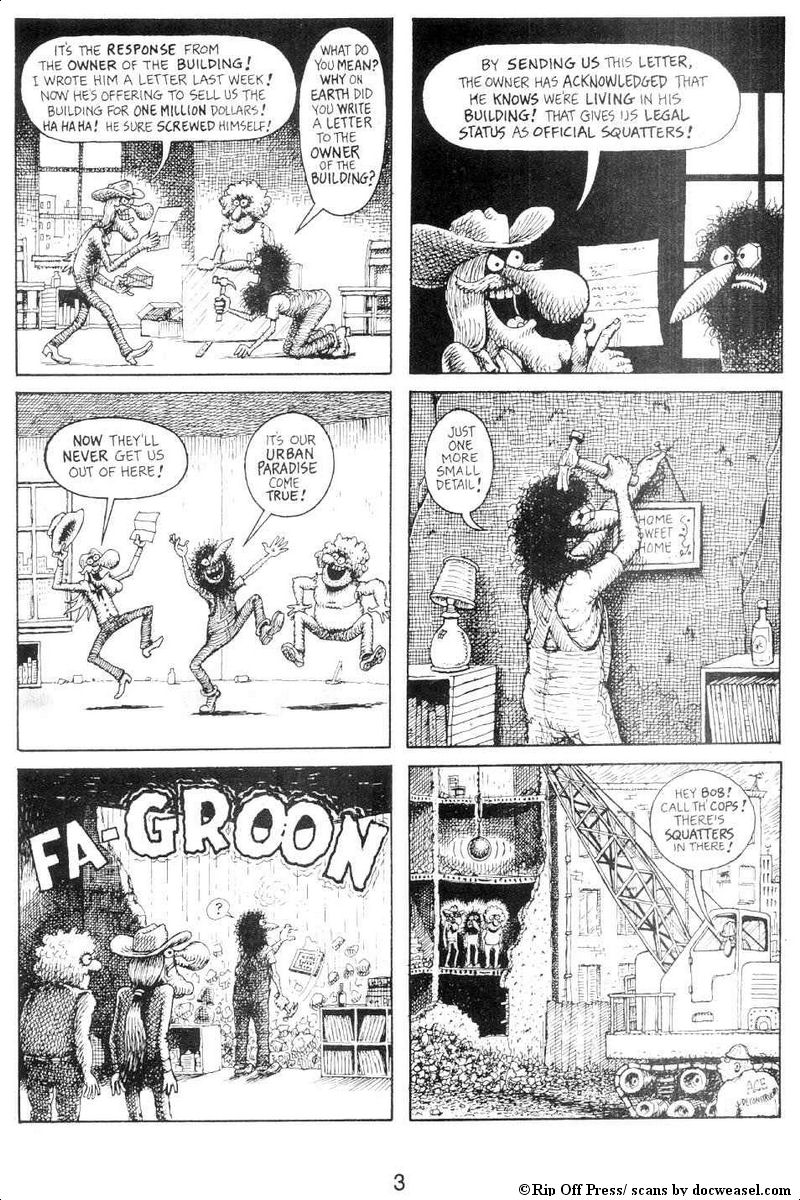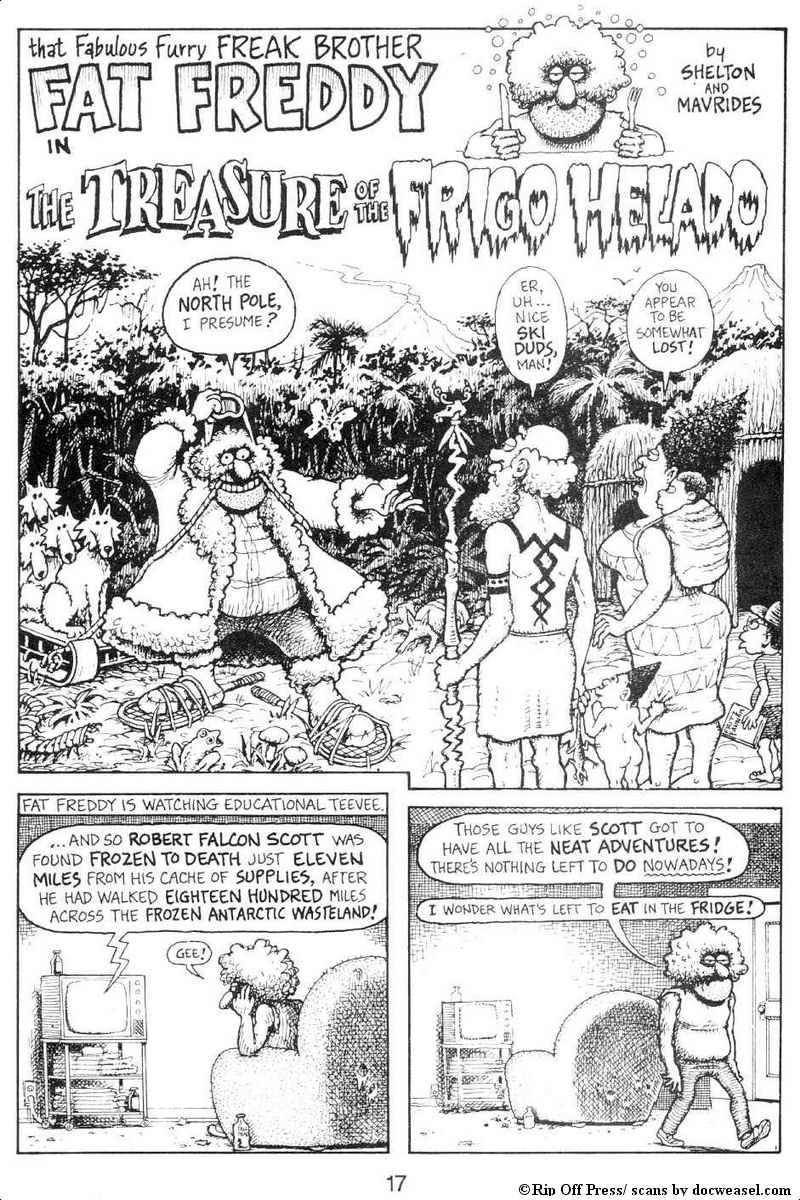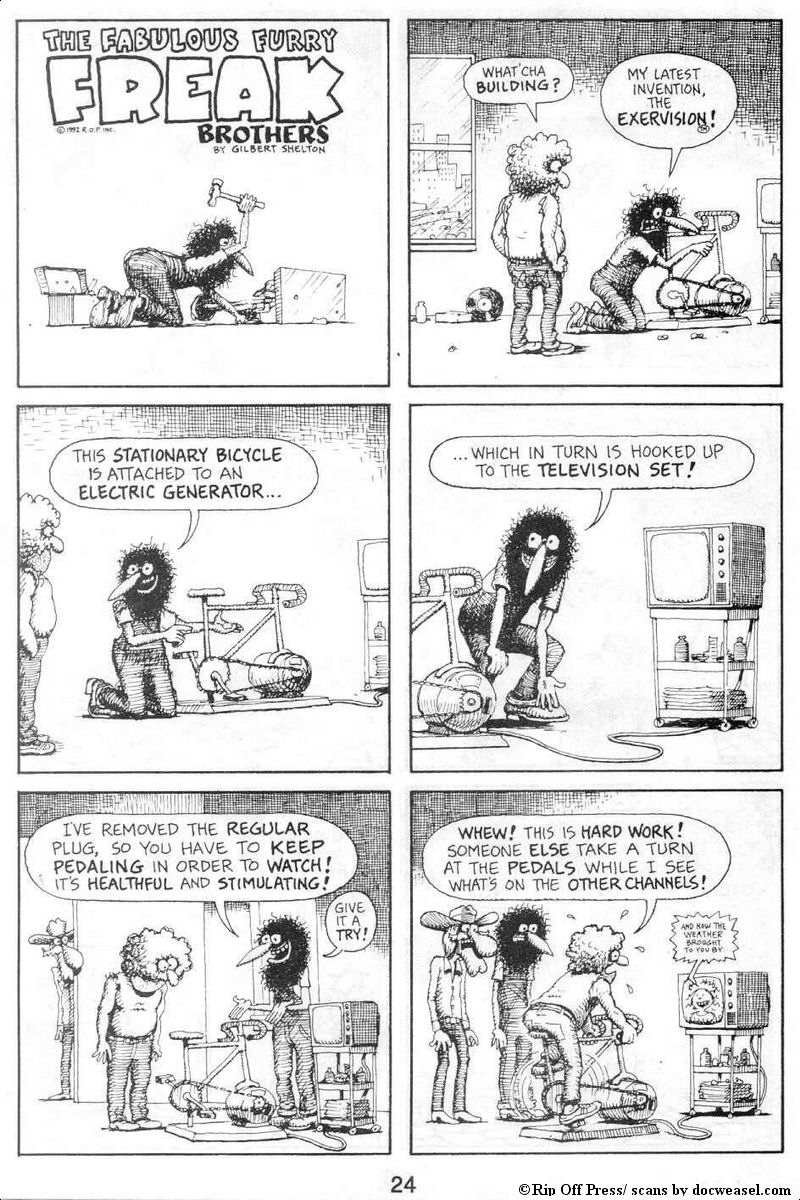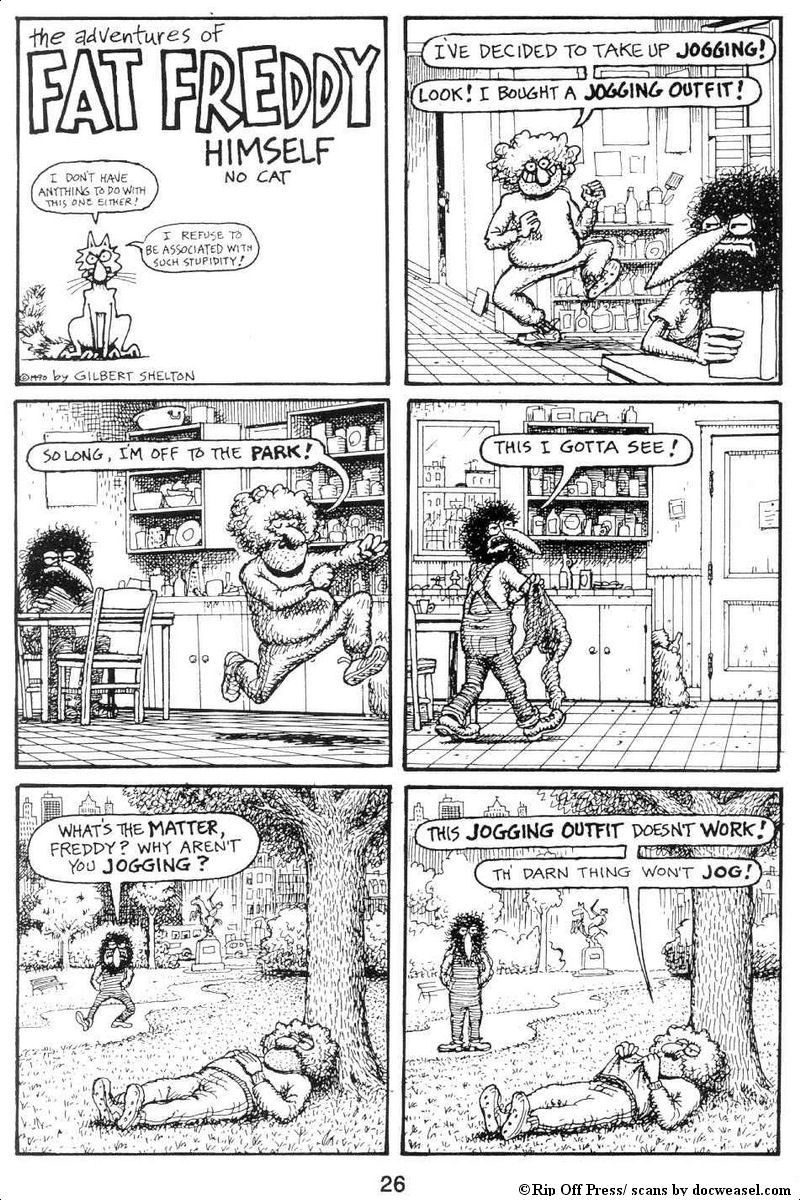fff 12 Sheldon & Mavrides

fff 12 Sheldon & Mavrides
Rip Off Press 1992
Fascist Dogs and Communist Cats • Red Hot Squat • Quicktime Burger Napkins • Norbert the Nark Pride of the Drug Interdiction Police Service in Fraud and FUlfillment • Fat Freddie’s Fungus • Police Brutality Video • Old Man Freddie • Graffitos • Cat Owners are Gross • Fat Freddie in Treasure of the Frigo Helado • Phineas’ Big Show • Catnap • Any Questions? full color poster
A quarter-century after their debut in the Austin Rag, The Fabulous Furry Freak Brothers appear in their final comic book of new material. They also return to the glorious black and white colors of their origin, leaving behind their technicolor dream state for good (or at least until their long-awaited animated movie comes out).
Thank God this comic is not a piece-of-shit good-bye to their fans. Although the artwork in this book, panel-for-panel, is not quite up to the standards set in previous comics, it’s still exceptionally good, and the story scripts are as good as they’ve ever been. This issue also marks the return to multiple one- and two-pager stories packed between a few stories of intermediate length. There are no epic tales to be told here! Just a bunch of funny episodes in the world of our Furry Freaks.
Of course, that world had changed quite a bit since the Freak Brothers debuted back in 1967. And it hadn’t only changed from the hippie era coming to an end. Hell, that era was essentially over before Rip Off printed the Freaks’ first comic book in ’71. But in the early ’70s, the recreational drug era in America (and the world) was far from over. In fact, it had only just begun. The druggy generation in the ’70s, which comprised a significant minority of the public at large, catapulted the Freak Brothers to unprecedented (and still unmatched) success in the underground and alternative comic book industry.
But then the ’80s were dominated by right-wing Christians and the Reagan Era, which reigned over the American landscape and dictated the debate on social, economic and foreign policies. There were still plenty of illicit drugs (cocaine becoming the drug of choice), but in the media the counterculture was led by MTV and punk rockers, a distant cry from the Summer of Love and The Freak Brothers.
The chasm between youth counterculture and the Freak Brothers only expanded in the ’90s. In 1992, when the final issue of Freak Brothers was published, Gilbert Shelton was 52 years old. Even baby-pothead Paul Mavrides was 47. The counterculture was led by Generation X, the first major-label generational successor to the hippie generation. Not only were hippies turning into grandparents, but many of the punk rockers Shelton lampooned in the early ’80s were now corporate executives with mortgages and snot-nosed kids.
To Shelton’s credit, he did not try to force the ’70s Freak Brothers to live in the ’90s without any benefits of maturity. In Freak Brothers #12, Fat Freddy, Phineas and Freewheelin’ Franklin are the kind of old stoner dudes who might live next door and talk to your teenage kids before you got home from your full-time job.
This is particularly evident in an untitled story that begins on page 12 (or 14 by Kennedy standards), in which the Freak Brothers regale three punk rocker friends with tales from their youth, including how they used to avoid drug busts by tossing their stash and paraphenelia out their apartment window. Of course, an hour later the punk rocker kids fool the Freak Brothers into thinking they’re getting busted, the old stoner dudes toss their drug shit out the window, and the punkers steal all the drugs.
This isn’t the first time the Freak Brothers are made to look old compared to the current youth generation, but it’s probably the first time they are made to look over 40 years old. And in real-life years, the classic “Winter of ’59” story indicates that the Freak Brothers were probably all born the same year as Shelton, in 1940, making them all 52 years old in 1992. Most of their fans were probably over 40 by then, too. In fact, by 1992, it seems likely that more Freak Brothers fans had given up smoking pot than were still smoking it (especially every day). But being straight doesn’t necessarily lessen the enjoyment of indulging in the Freak Brothers, who found a way to grow up without ever growing old.
And thanks to the timeless world of comic books, they will never grow old. Thanks for the great run, Gilbert Shelton, Dave Sheridan and Paul Mavrides.
Gilbert Shelton – 1, 2, 3-6 (art), 7, 8-15 (collaboration), 16-18, 19-25 (collaboration), 26-28, 29-34 (collaboration), 35 • G.V.I. (who the hell is G.V.I.?) – 3-6 (story) • Paul Mavrides – 8-15 (collaboration), 19-25 (collaboration), 29-34 (collaboration), 36 • Gerhard Seyfried – 29-34 (collaboration)




































